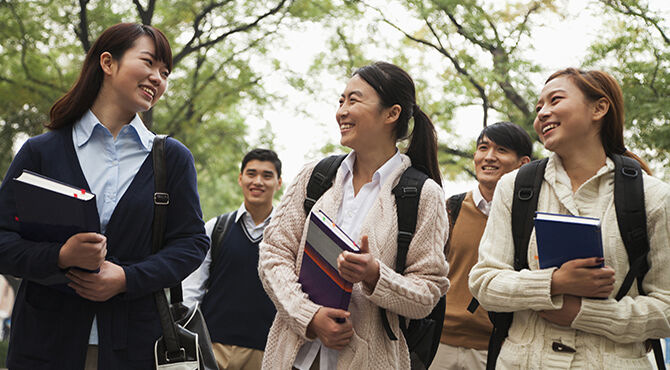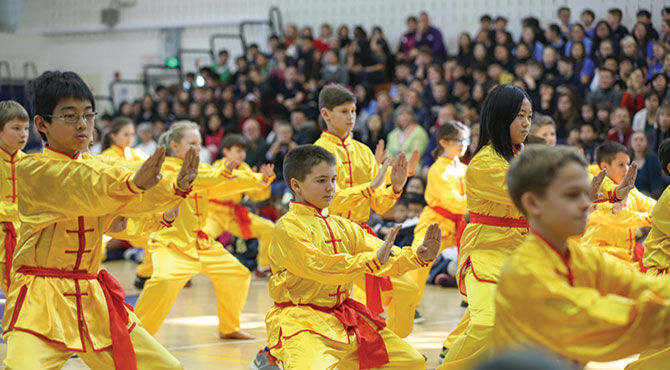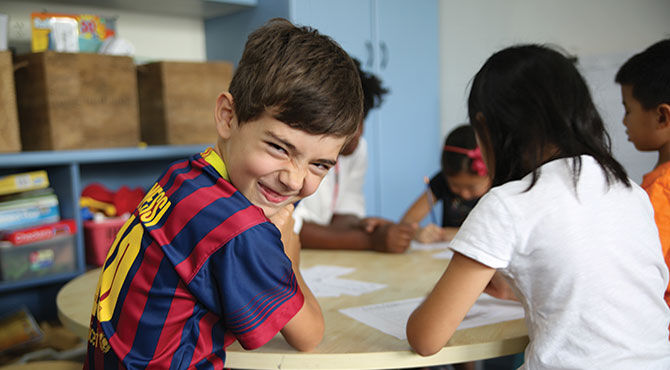China's expanding international school options
The availability of international schools in China is increasing rapidly, despite a system of segmentation in the international-schools market. ISC Research director Richard Gaskell explains why.

China’s international-school options
The international-schools market in China is relatively young. The latest data from ISC Research, which tracks developments in the world’s international-schools market, identifies 566 English-medium international schools in China. Most of these are located in Tier 1 cities, with 25 per cent in Beijing and 20 per cent in Shanghai. Many others are located in the provincial capitals, such as Shenzhen, Chengdu and Guangzhou. Not all these schools are for expatriates.ISC Research’s market intelligence report for China states that the aspirations of Chinese families for an English-medium, internationally oriented education are fuelling demand. This is now driving the development of a new segment of international schools, including those that involve partnerships between a Chinese owner and a foreign school, and bilingual schools with an international focus on teaching and learning. “As China continues to grow, both in population and as a global leader, the importance of understanding Chinese culture and learning the Chinese language also continues to grow,” says an Australian parent of two children at 3e International School, in Beijing. “International schools in China are providing students with education incorporating both Western and Chinese academic and cultural understanding, to ensure students attain a well-rounded, global education.”3e is a mid-sized school that supports student and family well-being. “All our students learn both English and Chinese, with equal emphasis placed on both languages throughout school,” says principal Amy Loveday-Hu. “Class sizes are small and teacher-to-student ratios high, to allow for optimal teacher-student interaction. Education of the whole child is a vital part of the 3e philosophy.”IB World School Shanghai Community International School (SCIS) has three campuses in the city. “With over 58 nationalities represented on our campuses,” says marketing and communications manager Mun Yee Choo, “SCIS offers a truly international experience.”SCIS Hongqiao (Grade 2 to Grade 12) and SCIS Pudong (nursery to Grade 12) offer US college admissions tests the Advanced Placement, the ACT and the SAT. Both campuses provide modern facilities, such as indoor swimming pools and multipurpose gyms. SCIS Hongqiao ECE (nursery to Grade 1) has tailored its curriculum with the ‘whole child’ in mind. Facilities include outdoor play centres and a junior running track.
“As China continues to grow, both in population and as a global leader, the importance of understanding Chinese culture and learning the Chinese language also continues to grow,” says an Australian parent of two children at 3e International School, in Beijing. “International schools in China are providing students with education incorporating both Western and Chinese academic and cultural understanding, to ensure students attain a well-rounded, global education.”3e is a mid-sized school that supports student and family well-being. “All our students learn both English and Chinese, with equal emphasis placed on both languages throughout school,” says principal Amy Loveday-Hu. “Class sizes are small and teacher-to-student ratios high, to allow for optimal teacher-student interaction. Education of the whole child is a vital part of the 3e philosophy.”IB World School Shanghai Community International School (SCIS) has three campuses in the city. “With over 58 nationalities represented on our campuses,” says marketing and communications manager Mun Yee Choo, “SCIS offers a truly international experience.”SCIS Hongqiao (Grade 2 to Grade 12) and SCIS Pudong (nursery to Grade 12) offer US college admissions tests the Advanced Placement, the ACT and the SAT. Both campuses provide modern facilities, such as indoor swimming pools and multipurpose gyms. SCIS Hongqiao ECE (nursery to Grade 1) has tailored its curriculum with the ‘whole child’ in mind. Facilities include outdoor play centres and a junior running track.Exploring the range of international schools
Four distinct types of international school are allowed by China’s Ministry of Education:- Schools for children of foreign workers (SCFW), colloquially known as ‘expat schools’, provide international education for the expatriate community and are also accessible to the children of Chinese families who have a foreign passport, and ethnic Chinese students migrating from other Asian countries. They are not allowed to enrol Chinese nationals.
- Sino-foreign cooperative schools are joint ventures between a Chinese owner and a foreign education company or school. These are restricted to secondary and higher education. The foreign organisation typically provides the teaching and learning, while the Chinese partner provides the land and financial investment. Both expatriate and Chinese students can attend these schools.
- Chinese-owned private schools are able to provide bilingual learning. An increasing number of Chinese/English bilingual private schools that have a distinctly international focus are opening. Many offer internationally recognised examinations and diplomas. These schools mostly serve Chinese students.
- A few Chinese-owned public/state schools are now running an international stream as an option for high-school students.
Expanding international education in china
The international-schools market has developed significantly in China in recent years, with several UK independent schools making their mark. Dulwich College led the way in 2004 and now has four schools, two in Shanghai and one each in Beijing and Suzhou. It was followed in 2005 by Harrow, which opened a school in Beijing.Wellington College is another example of a UK independent school seeing success in China. It opened its first school (in Tianjin) in 2011 and a second (in Shanghai) in 2014.Helen Kavanagh, deputy chair of governors at Wellington, explained the location choices. “Tianjin surprises some people, but it is a place that is growing particularly well and is only 20 minutes outside Beijing on the bullet train. Wellington Shanghai is on an incredible 17-acre plot, right in the heart of the new bund, which is such a good location. There is a lot of prestigious development here, the financial centre – everything’s going to be around here.”The two Wellington schools in China reflect the UK school in environment, infrastructure, learning and teaching, but they also value and draw upon their Chinese location.“The core of learning is derived from the British National Curriculum, adapted to embrace the globally recognised and innovative programmes of the International Baccalaureate Organisation,” explained Joy Qiao, chair of governors for Wellington College International China. “Immersing our pupils in Chinese language and culture provides them with the tools and confidence they need to succeed beyond the classroom. With the encouragement of the Chinese government in both Tianjin and Shanghai, the college has been able to grow and develop its links within China, allowing the vision of a truly international curriculum to be realised.”Concordia International School Shanghai was established in 1998 and teaches over 1,100 students aged from three to 18. High-school principal Christopher Schuster says, “An international education provides students with multiple cultural perspectives to view the world. We identify the strengths and challenges for our students as they live overseas, away from their passport cultures. A child will grow in their cross-cultural understanding and confidence that they can make a difference in the world.All these schools are accessible only to the children of expatriates and Chinese children who have parents with foreign passports.“Many Chinese nationals would love their children to attend, but they’re not allowed to enrol,” said Helen Kavanagh. “We could fill our places ten times over with locals.”
Other options
In addition to the UK independent schools now established in China, many other international-school options exist for families relocating to the country’s leading centres for trade. One example is the International School of Beijing, which was established in 1980 as the first international school in the city, to offer a local education option to the children of foreign diplomats.The school, located in Beijing’s Shunyi District, has since expanded beyond embassy staff, and now offers education – including the International Baccalaureate Diploma Programme – to around 1,700 students, predominantly expatriates of 50 different nationalities. It has two sports and recreation domes spanning more than 8,500 square metres, enclosing six tennis courts and a wide range of sports and fitness facilities.The pressurised domes are equipped with air-filtration and heat-recovery systems. The International School of Beijing is not the only school to respond to the challenges of Beijing’s air pollution. Beijing City International School, Harrow International School Beijing, and the Canadian International School of Beijing have all installed air-filtration systems in classrooms. High levels of pollution in Beijing have led some companies to look to Shanghai as an alternative base. As well as its somewhat cleaner air, new incentives within its free-trade zone and a good selection of available international schools are attracting a number of multinational corporations to Shanghai.In addition to relocations from Beijing, major companies are being lured from Hong Kong, where the lack of international-school places is deterring many expatriate families from accepting assignments.According to ISC Research data, the number of international schools in Shanghai increased by 39 per cent between May 2010 and May 2014. These schools currently educate around 69,000 students.The oldest and largest international school in the city is Shanghai American School. Built on two campuses, it provides a US-oriented curriculum for more than 1,700 children and boasts the largest English-language library in China. Based on continued demand for places, the school opened an additional Pre-K (pre-kindergarten) class in September 2015.
International schools for chinese children
Schools currently experiencing the most growth are those accessible to local children. A number of UK independent schools are involved in these developments.In addition to having four international schools dedicated to expatriates in China, Dulwich College works with two high schools, in Suzhou and Zhuhai, to offer a UK-oriented curriculum to Chinese nationals. Students study for IGCSEs and A Levels, with the aim of progressing to higher education in the UK or the US.In 2012, Malvern College Qingdao opened as a purpose-built international secondary school licensed by the Chinese authorities for Chinese nationals. Students follow an English-speaking foundation course in preparation for A Levels. Ancillary programmes are also provided, to help develop high-level English literacy and language skills. The college opened a second international secondary school for Chinese nationals in Chengdu in September 2015.HD Ningbo School, in Zhejiang province, is another school meeting requirements to accept Chinese nationals. It is bilingual and, because it offers a dual curriculum that is part Chinese in the junior school, local Chinese students are allowed to attend.The school is partnered with the UK’s Hurtwood House School. “Hurtwood House specialises in sixth form and A Levels, and that’s a perfect match for us; they help us with a lot of things, particularly the education philosophy and the teaching and learning,” said Tao Sun, owner and chairman of HD Ningbo.Explaining his motivation for establishing the school, which reflects the views of of an increasing number of Chinese parents, he added, “I wanted my kids to be Chinese, to know who they are, but to learn with a global perspective and to be fully prepared for a Western university. If you want your child to have many options for world-class universities, and if you want them to survive, thrive and succeed there, then they need to start learning and speaking English as soon as they can.”Recent developments
For expatriates, the latest international schools include United World College (UWC) Changshu, which opened in September 2015 in the Yangtze Delta. The school caters for 520 students and offers the International Baccalaureate Diploma Programme plus a one-year pre-IB preparatory programme. As with all UWC colleges, students are competitively selected, and many receive needs-based scholarships to represent their region or country at the school. Approximately a third of these students are Chinese nationals from different parts of the mainland. The remainder are foreign students, including those from a range of countries and those from expatriate families already based in China.Harrow International School Shanghai opened in August 2016. It is situated on the newly developed Sunland project, 30 minutes from the centre of Shanghai. The school provides learning for all years up to Year 13, and will offer both day and boarding facilities by 2018. ISC Research provides data and market intelligence for the world’s English-medium international-schools market.
Now available as an ebook on Amazon! Simply download from Amazon onto your Kindle, mobile phone or tablet to read wherever you are!
For related news and features, visit our Education & Schools section.Access hundreds of global services and suppliers in our Online Directory
 Get access to our free Global Mobility Toolkit
Get access to our free Global Mobility Toolkit  © 2017. This article first appeared in the 2017 edition of the Guide to International Education & Schools, published by Profile Locations, Spray Hill, Hastings Road, Lamberhurst, Kent TN3 8JB. All rights reserved. This publication (or any part thereof) may not be reproduced in any form without the prior written permission of Profile Locations. Profile Locations accepts no liability for the accuracy of the contents or any opinions expressed herein.
© 2017. This article first appeared in the 2017 edition of the Guide to International Education & Schools, published by Profile Locations, Spray Hill, Hastings Road, Lamberhurst, Kent TN3 8JB. All rights reserved. This publication (or any part thereof) may not be reproduced in any form without the prior written permission of Profile Locations. Profile Locations accepts no liability for the accuracy of the contents or any opinions expressed herein.
































